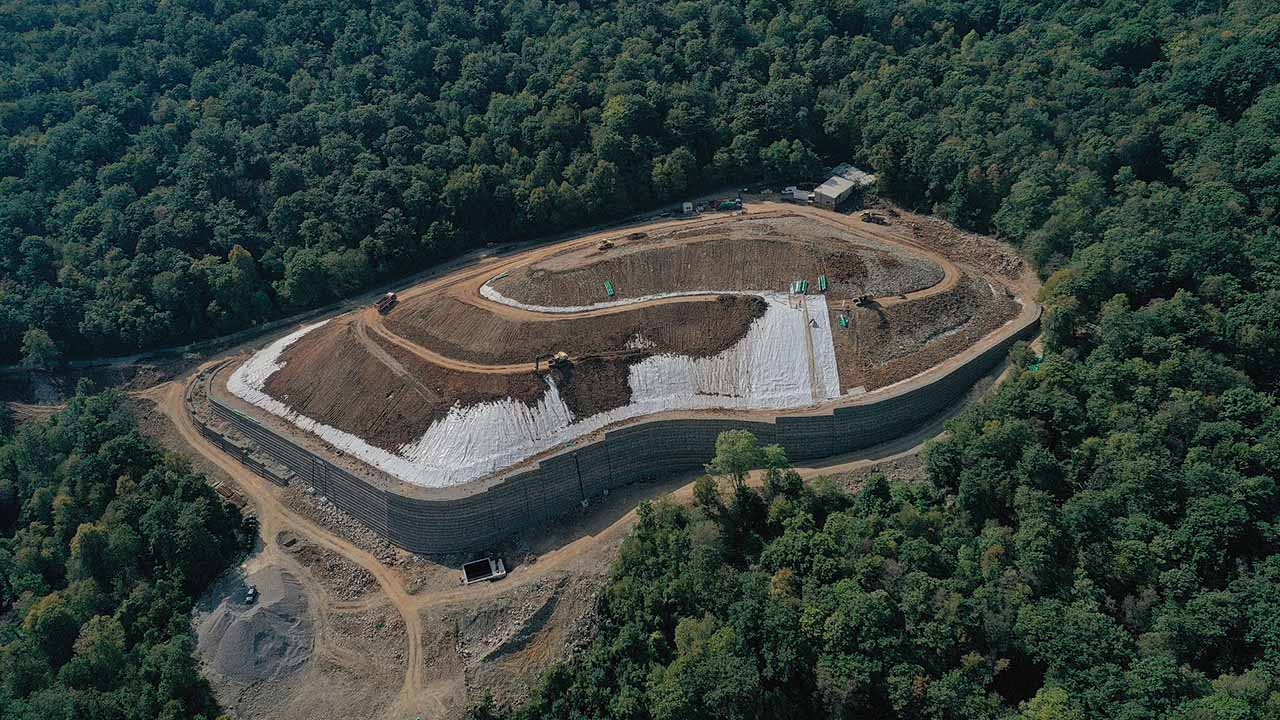
Geosynthetics allow for the safe disposal of plastic waste, while saving carbon emissions, for example when used in landfills. Here, geosynthetics are used to contain plastic waste and prevent leakage of microplastics and toxic substances.
The cover system of the landfill illustrated in the figure contains a composite geomembrane/GCL barrier layer. The drainage layer overlying the geomembrane is a geocomposite sheet drain (composite geotextile/geonet). Besides, the soil cover system includes geogrid, geotextile, or geocell reinforcements below the infiltration barrier system. This layer of reinforcements may be used to minimize the strains that could be induced in the barrier layers by differential settlements of the refuse or by future vertical expansion of the landfill. Also, the cover system could include a geogrid or geotextile reinforcement above the infiltration barrier to provide stability to the vegetative cover soil. Fiber reinforcement may also be used for stabilization of the steep portion of the vegetative cover soil. A geocomposite erosion control system above the vegetative cover soil is indicated in the figure and protects against sheet and gully erosion.
Geosynthetics used in landfills provide technical and economic advantages over traditional clay liners. It may create stability issues and even lead to landfill failure due to its low interface or internal shear strength if improperly designed and/or constructed. The most common failure mechanism in geosynthetic-lined landfills is transitional failure involving waste and bottom liner (deep-seated failure) or only final cover system (shallow failure). Shear strengths of geosynthetic-geosynthetic and geosynthetic-soil have a wide range of variations.


